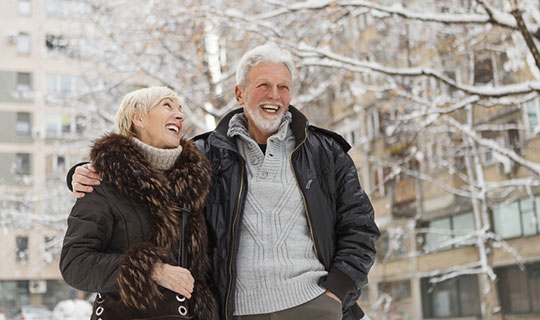 Christopher Freer, DO, FACEP, Senior Vice President for Emergency and Hospitalist Medicine of RWJBarnabas Health
Christopher Freer, DO, FACEP, Senior Vice President for Emergency and Hospitalist Medicine of RWJBarnabas Health
According to the Centers for Disease Control and Prevention (CDC) winter weather kills more than twice as many Americans than summer heat. Between excessive cold, snow and ice, high risk situations are created in the winter months. The most common injuries seen during and after winter weather events are slips and falls. The CDC reports that, one out of three adults, age 65 and older, falls each year and these falls are the most common cause of nonfatal injuries and hospital admissions for trauma. Bad weather exacerbates this with the addition of hazardous such as snow, ice and wet surfaces creating dangerous slippery conditions.
A serious fall can inflict significant consequences on those of any age, but for older adults, falls can cause traumatic brain injuries which can ultimately be fatal. Even for elderly fall patients if a fall injury is not fatal it can result in a stay in a nursing home and a subsequent health decline.
The risk factor for falling in winter weather increases for:
- Those who have experienced previous falls
- Those with poor vision
- Those with chronic health conditions
- Those who use multiple medications
The best way to prevent a fall from slippery and icy conditions is to prevent the ice from forming in the first place. If possible, you should shovel snow off driveways and walkways as soon as the snow falls, and it is safe to do so. Do not wait until the snow has a chance to freeze. Even if you need to ask others to help you remove snow, it is worth the trouble to prevent a fall hazard. Salt can be put down on surfaces to melt any ice left behind after shoveling and prevent new ice from forming. Kitty litter or sand can also be tossed onto surfaces to provide better traction.
Other ways to prevent a fall injury when walking in the snow or on ice include:
- Taking your time in risky locations – for example, when stepping out of your vehicle or onto stairs, check first to see if the surface is slippery.
- Change your walking style – it may sound funny but walking slower and with a wider gait can give better balance. Use short shuffling steps and keep your hands out of your pockets to stay balanced.
- Wear proper winter clothes – wearing warm clothing that covers you well as well as footwear with treads and good traction can protect you from falling. Bring your cellphone with you, too. In case you fall, you can call for help.
In the event that you do slip and fall on the ice, do not try to get up right away. This can cause further injury. Take your time. Stay there a moment and assess how you are feeling and whether you have any injuries. Once you have assessed your injuries, if possible, roll to one side and push yourself up with your arms. Then use your legs to stand up the rest of the way. If possible, have someone assist you to your feet. Call 911 or emergency medical help if necessary.
Some general lifestyle strategies can help to prevent falls in the future, including:
- Exercise regularly, particularly exercises that maintain or improve balance and strength
- Review all medications to reduce side effects and drug interactions that could impair balance
- Have a yearly eye exam to check vision
- Eat calcium and vitamin D rich foods that protect your bone health
- Ask your doctor for an assessment for your personal risk of falling and together you can create a plan to prevent falls
For more information please visit: www.rwjbh.org and / or call: 888-724-7123.